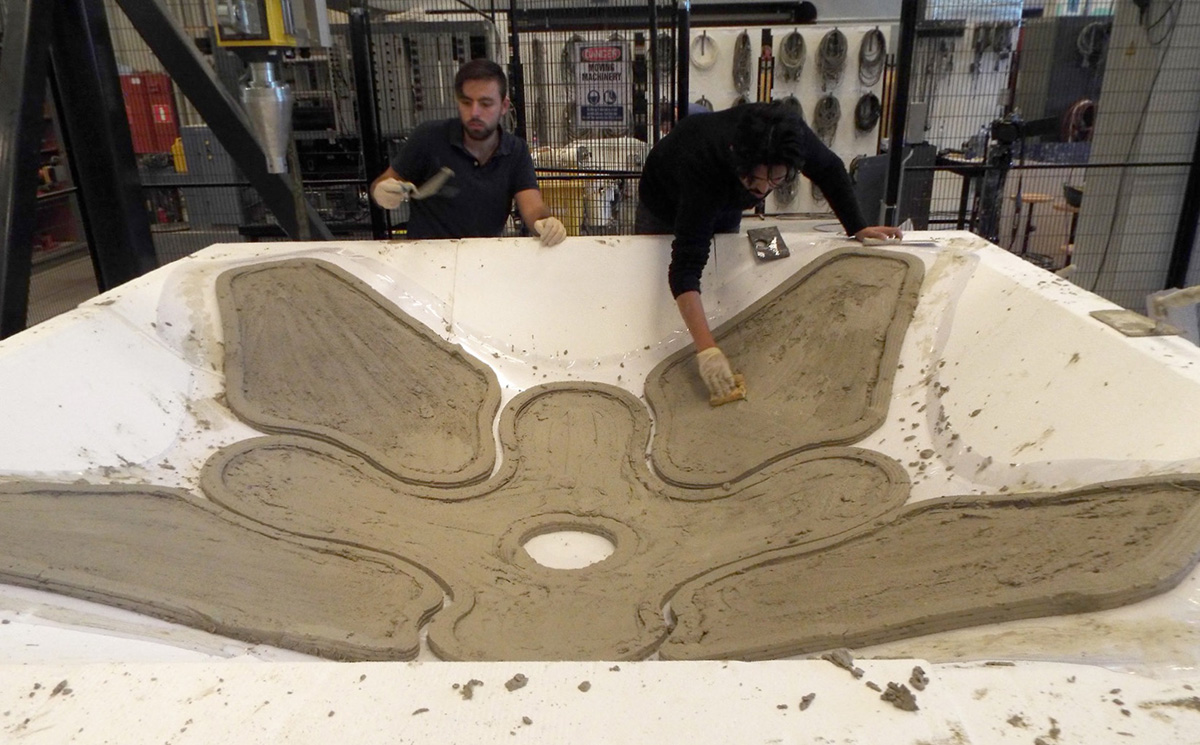Downloads
DOI:
https://doi.org/10.7480/spool.2017.2.1920Keywords:
casting concrete, 3D concrete printing, Additive Manufacturing, adaptable mouldAbstract
It is no secret that there have been some great advances in the realm of concrete additive manufacturing. However, one of the major drawbacks of this fabrication technique is that the elements must be self-supporting during printing. While most other additive manufacturing materials can overcome this by using a secondary printed support structure, alternative strategies have to be developed for materials such as concrete.
This 4TU project explores the possibilities of combining concrete additive manufacturing with a temporary support surface. By printing on a free-form surface, more intricate geometries can be realized. A number of potential applications have been outlined, however the principle focus is combining concrete additive manufacturing and casting. The end result is a partially-printed pavilion using a completely digital design-tofabrication workflow.
How to Cite
Published
License
Copyright (c) 2020 SPOOL

This work is licensed under a Creative Commons Attribution 4.0 International License.




